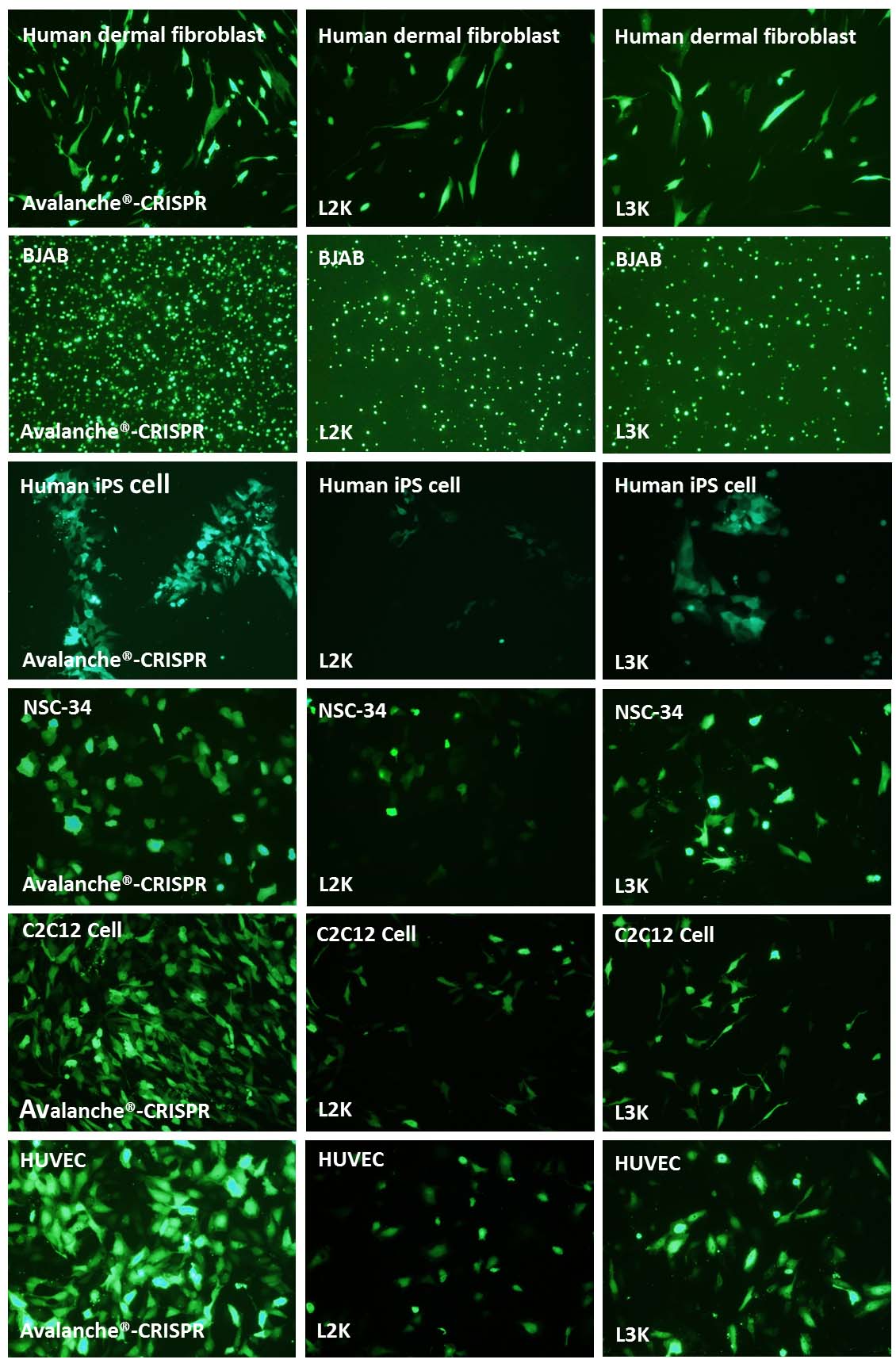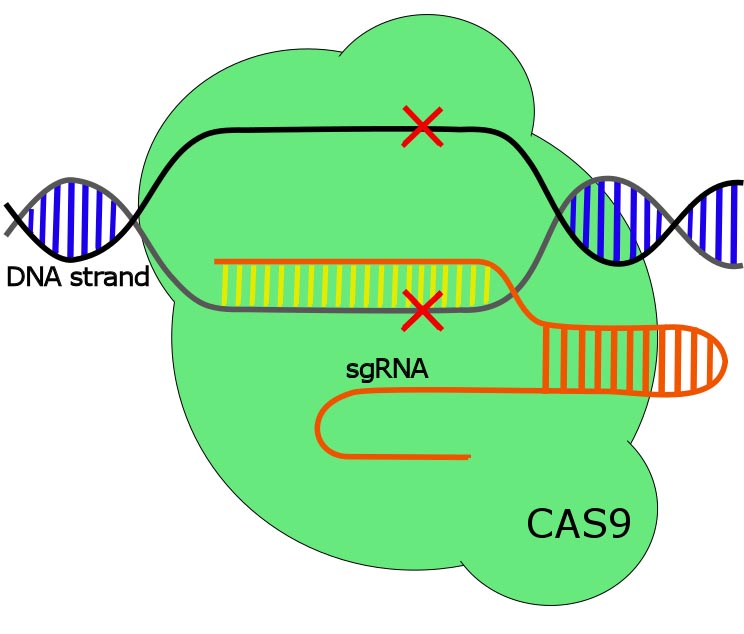Description
CRISPR-Cas9®mediated genome targeting:
CRISPR-Cas9 has triggered a revolution in which laboratories around the world are using the technology for innovative applications in biology. This technology is able to systematically analyze gene functions in mammalian cells, study genomic rearrangements and the progression of cancers or other diseases, and potentially correct genetic mutations responsible for inherited disorders.
The CRISPR-Cas system is a prokaryotic immune system that confers resistance to foreign genetic elements such as plasmids and phages, and provides a form of acquired immunity. CRISPR spacers recognize and cut these exogenous genetic elements in a manner analogous to RNA interference in eukaryotic organisms. CRISPRs are found in approximately 40% of sequenced bacteria genomes and 90% of sequenced archaea.
The CRISPR interference technique can be applied in eukaryotic cells. By delivering the Cas9 protein and appropriate guide RNAs (sgRNA) into a cell, the organism’s genome can be cut at any desired location.
The Cas9 enzyme (green) generates breaks in double-stranded DNA by using its two catalytic centers to cleave each strand of a DNA target site next to a PAM sequence and matching the 20-nucleotide sequence of the single guide RNA (sgRNA).
The Transfection Reagent:
Features:
- Specifically designed for CRISPR-Cas9 gene editing transfection in mammalian cells.
- Broad spectrum for the transfection of large plasmid (>9.0 kb), mRNA, siRNA, and/or other type of nucleic acids, which is best for co-transfection of large plasmids with either small plasmids or small RNA, such as sgRNA..
- Great for CRISPR-Cas9 gene editing in difficult-to-transfect cells, such as primary cells, suspension culture cells, or neural cells.
Data
 Avalanche®-CRISPR outperforms other brands of transfection reagents on transferring Cas9/GFP co-expression plasmids into some difficult-to-transfect cells. GFP expression in different type of cells after transfecting pCas9-GFP plasmid (Addgene #44719) by using Avalanche®-CRISPR, Lipofectamine® 2000 (L2K), and Lipofectamine® 3000 (L3K). The cells tested are: Human dermal fibroblast, BJAB (human Burkitt lymphoma cell), Human iPS cell, NSC-34 (Mouse Motor Neuron Hybrid Cell), C2C12 cell (mouse myoblast), and HUVEC (Human Umbilical Vein Endothelial Cell)
Avalanche®-CRISPR outperforms other brands of transfection reagents on transferring Cas9/GFP co-expression plasmids into some difficult-to-transfect cells. GFP expression in different type of cells after transfecting pCas9-GFP plasmid (Addgene #44719) by using Avalanche®-CRISPR, Lipofectamine® 2000 (L2K), and Lipofectamine® 3000 (L3K). The cells tested are: Human dermal fibroblast, BJAB (human Burkitt lymphoma cell), Human iPS cell, NSC-34 (Mouse Motor Neuron Hybrid Cell), C2C12 cell (mouse myoblast), and HUVEC (Human Umbilical Vein Endothelial Cell)
Additional Information
| Weight | 0.5 lbs |
|---|---|
| Product Sizes | 0.5 ml, 1.5 ml |
| Subcategories | Broad Spectrum |
Documents
Protocols
MSDS
Citations or Feedback
- Nasuhidehnavi, A., Zhao, Y., Punetha, A., Hemphill, A., Li, H., Bechtel, T. J., . . . Yap, G. S. (2022). A Role for Basigin in Toxoplasma gondii Infection. Infect Immun, 90(8), e0020522. doi:10.1128/iai.00205-22



